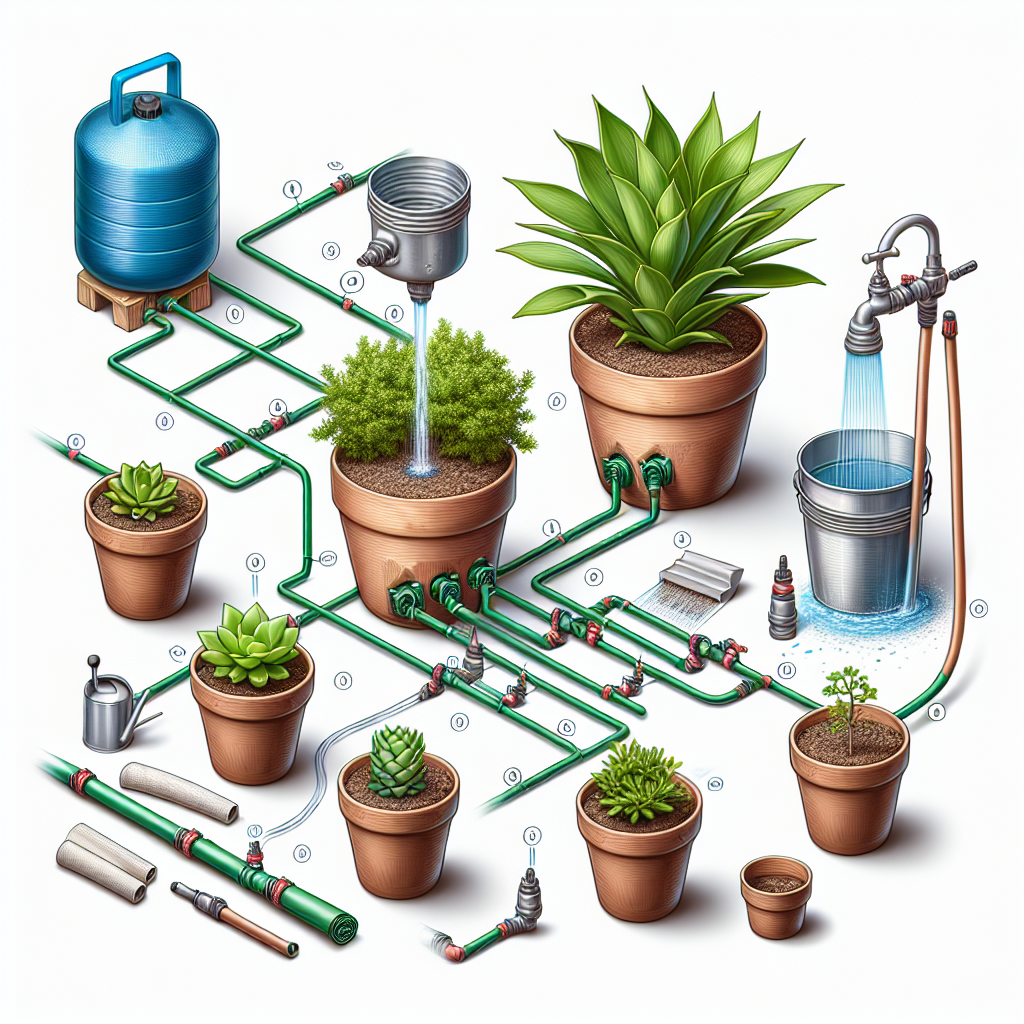Gardening is a delightful hobby that brings joy and satisfaction to many people. Whether you have a sprawling garden or just a few potted plants, maintaining them can be time-consuming and labor-intensive. One way to make gardening easier and more efficient is by setting up a slow drip irrigation system for your pots.
What is a Slow Drip Irrigation System?
A slow drip irrigation system is a method of watering plants slowly and evenly over an extended period of time. This type of system delivers water directly to the plant’s roots, minimizing waste and ensuring that each plant receives the optimal amount of moisture it needs to thrive.
There are several benefits to using a slow drip irrigation system for your potted plants. First and foremost, it saves you time and effort by automating the watering process. Instead of having to water each pot individually, you can set up a system that will do the job for you.
Additionally, slow drip irrigation systems are more efficient than traditional watering methods such as hand-watering or using sprinklers. By delivering water directly to the roots, these systems reduce evaporation and runoff, resulting in less water waste.
Lastly, slow drip irrigation systems promote healthier plant growth by providing consistent moisture levels that encourage strong root development and prevent overwatering. This can help prevent issues such as root rot and fungal diseases that can occur when plants are subjected to fluctuating moisture levels.
How to Set Up a Slow Drip Irrigation System for Your Pots
Setting up a slow drip irrigation system for your potted plants is relatively simple and requires only a few basic supplies. Here’s how you can do it:
Step 1: Gather Your Supplies
To set up a slow drip irrigation system for your pots, you will need the following supplies:
– A water source
– A timer
– Tubing (preferably flexible so it can be easily maneuvered)
– Drip emitters or stakes
– Connectors (such as tees or elbows)
– Hose clamps
– Scissors or tubing cutter
You can find these supplies at most garden centers or hardware stores.
Step 2: Measure and Cut Tubing
Start by measuring the distance between your water source (such as an outdoor faucet) and your pots. Cut the tubing to the appropriate length using scissors or a tubing cutter. Make sure to leave some extra length for any turns or obstacles in your garden.
Step 3: Attach Connectors
Next, attach connectors such as tees or elbows to the ends of the tubing. These connectors will allow you to branch off into multiple lines if you have several pots to water.
Step 4: Insert Drip Emitters
Insert drip emitters or stakes into the tubing at intervals along its length. The number of emitters you need will depend on how many pots you have and how much water each pot requires. Make sure to place them near each pot’s roots for optimal watering efficiency.
Step 5: Secure Tubing
Secure the tubing in place using hose clamps or stakes. This will prevent it from shifting or coming loose during watering.
Step 6: Set Up Timer
Connect your tubing to a timer that will control when the system turns on and off. This will ensure that your plants receive water on a consistent schedule without you having to manually intervene each time they need watering.
Step 7: Test System
Turn on your water source and observe how the system operates. Make any necessary adjustments such as moving emitters closer or further from pots, increasing or decreasing flow rates, or adjusting timer settings until you are satisfied with its performance.
And there you have it! With just a few simple steps, you can set up a slow drip irrigation system for your potted plants that will make gardening easier and more enjoyable.
Tips for Maintaining Your Slow Drip Irrigation System
Once your slow drip irrigation system is set up, there are some tips you can follow to ensure its continued effectiveness:
– Regularly check the system for leaks, clogs, or other issues that may affect its performance.
– Adjust flow rates as needed depending on factors such as weather conditions, plant growth stages, or soil moisture levels.
– Clean out emitters periodically by removing them from tubing and soaking them in warm soapy water.
– Winterize your system by draining all water from tubing before temperatures drop below freezing.
– Monitor plant health regularly to ensure they are receiving adequate moisture from the system.
In conclusion, setting up a slow drip irrigation system for your potted plants is an excellent way to save time and effort while promoting healthy plant growth. By following these simple steps and tips, you can enjoy beautiful blooms and bountiful harvests without spending hours hand-watering each pot individually. Give it a try today!














